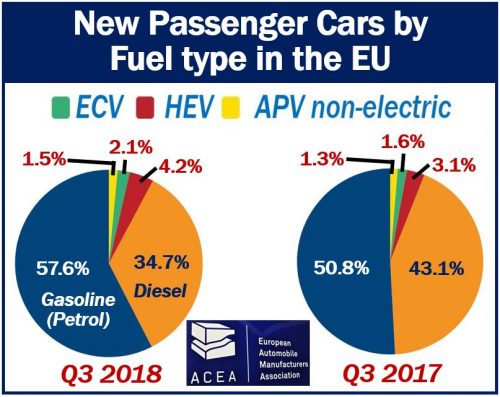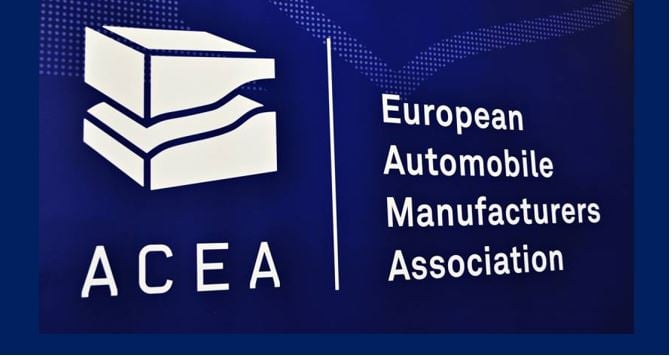In Q3 2018, nearly 58% of all new passenger cars that consumers bought in the EU ran on gasoline (UK: petrol). Approximately one-third of all cars ran on diesel, says the European Automobile Manufacturers Association.
All other APVs, in other words, alternatively-powered vehicles, combined represented 7.8% of total sales.
Only two percent of all passenger cars that consumers purchased across the EU were ECVs. ECV stands for electrically-chargeable vehicle.

Fuel types – gasoline and diesel
Gasoline’s market share rose by nearly seven percentage points in Q3 2018 compared to Q3 2017. Demand for gasoline cars has risen by 15.2% in the region. It has grown in every EU member state except for Sweden.
Diesel car sales, on the other hand, fell in every EU member state except for Poland, Bulgaria, Romania, and Denmark.
Market share refers to what portion or percentage of the market a product or product type represents.
Consequently, the market share of diesel cars declined from 43.1% to 34.7% of the passenger car market in Q3 2018 vs. Q3 2017.
Fuel types – APVs
In Q3 2018, demand for APVs grew by 29.7% in the EU. Below is a breakdown of the growth:
- 37.4% – Battery.
- 37.1% – Hybrid.
- 24.5% – Plug-in hybrid electric vehicles.
Demand for NGV and LPG passenger cars rose by 11.8%. LPG and NGV stand for liquid petroleum gas and natural gas vehicle respectively.
Demand for passenger cars that use alternative fuel types, i.e., alternatively-powered vehicles, increased in every EU major market. APV registrations in Spain and Germany grew by 62.5% and 51.4% respectively.

